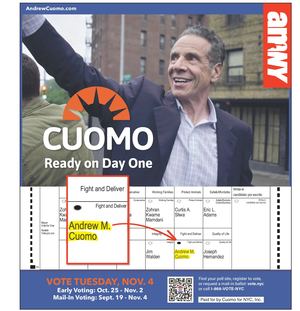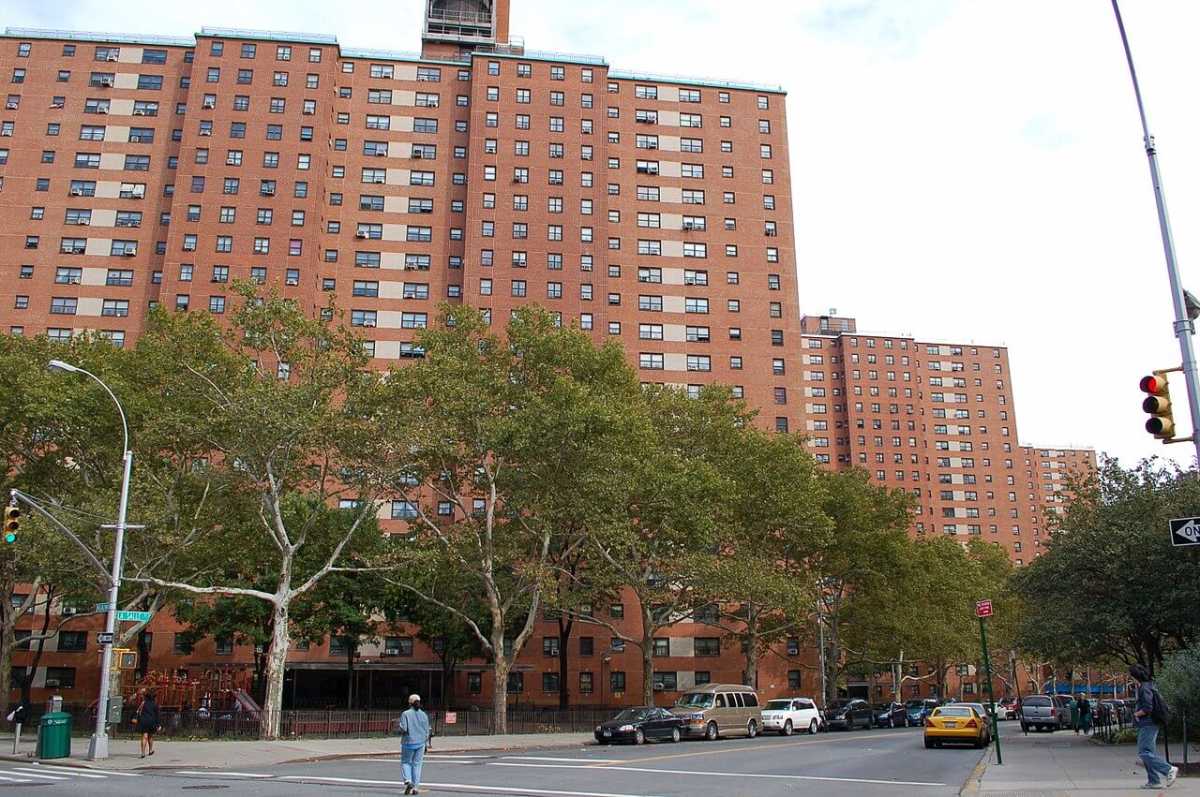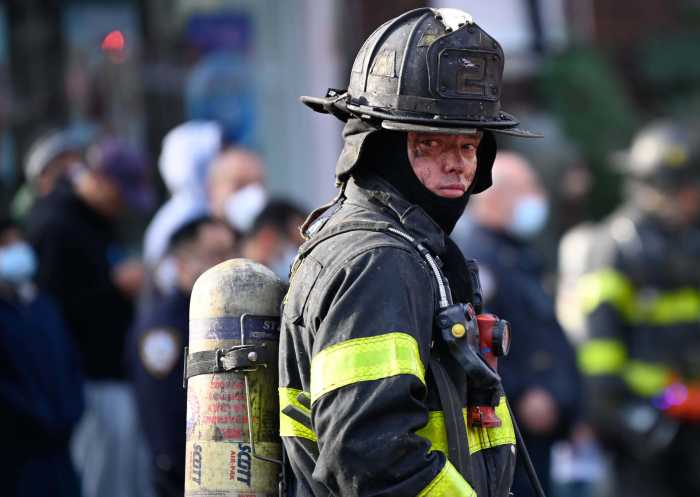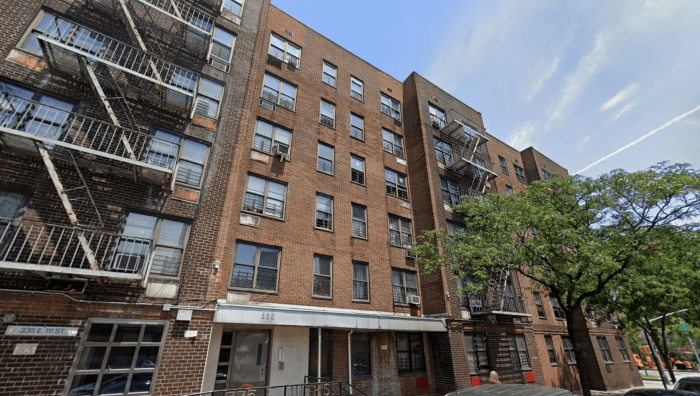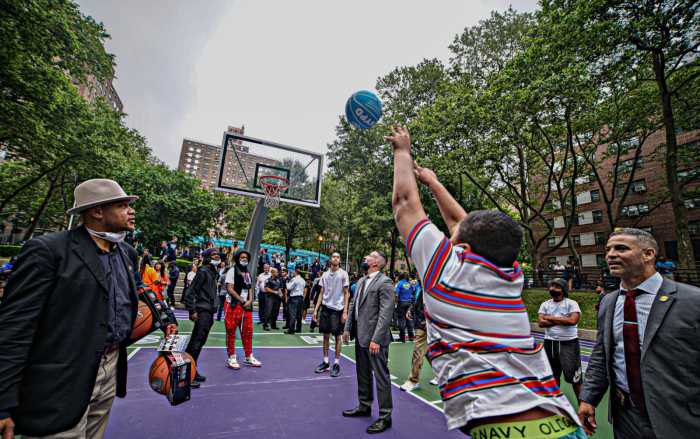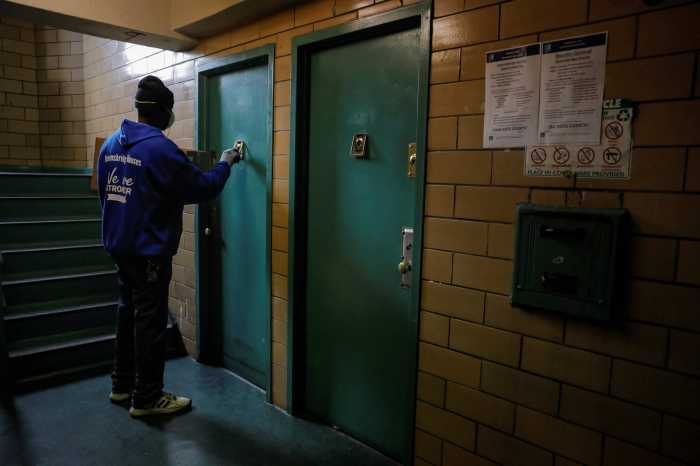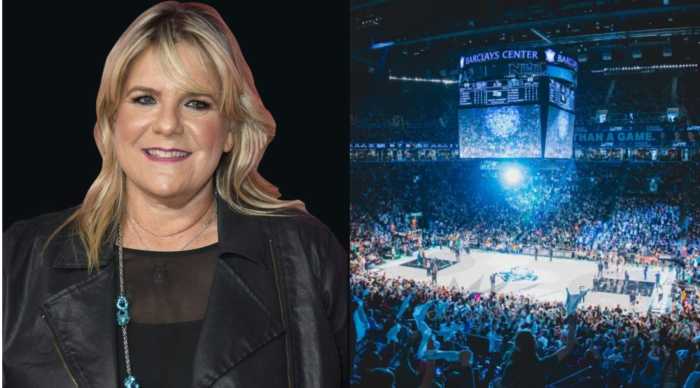Two lawsuits accusing the New York City Housing Authority (NYCHA) of negligence in a pair of homicide cases will head to trial after the state Court of Appeals ruled it could not unilaterally absolve the agency of responsibility.
Now, a jury of New Yorkers will decide whether or not NYCHA adequately protected two residents who were killed on its properties — the victims’ homes — in separate instances.
The decision, however, impacts more than just the NYCHA cases. Going forward, it potentially sets a new precedent — as landlords will not be able to rely on the “targeted victim” defense to write off their responsibility to provide proper security measures at apartment buildings.
According to both lawsuits, the murderers entered the buildings where the victims resided through broken, unlocked doors — something which NYCHA claims it cannot be held responsible for based on a state law that says landlords are not liable for protecting tenants in instances of “targeted” crimes.
The law reasons that if an attacker is determined to reach a specific victim, a locked door won’t stop them — hence, landlords could not be held responsible for providing extensive security measures.
The courts were split — the Manhattan Supreme Court agreed with NYCHA, ruling in 2019 the agency could not be held accountable in the killing of 18-year-old Tyshana Murphy, who was shot and killed at Grant Houses in 2011, because her killers were targeting her.
The First Department of the Appellate Division, which oversees Manhattan and the Bronx, upheld the ruling Murphy’s mother appealed, seeking a different answer.
But, in 2017, Brooklyn Supreme Court had decided differently on a very similar case. The court ruled it could not definitively say that NYCHA was off the hook for the 2007 murder of Bridget Crushshon, who was burned to death by an ex-partner at Cypress Hills Houses, and would send the case to trial.
NYCHA appealed the decision, but the Second Department of the Appellate Division upheld the Supreme Court’s ruling — agreeing that there were “triable issues of fact as to whether, inter alia, NYCHA fulfilled its duty to provide a safe environment given the volume of crime activity in the area, and whether the often-broken door lock could be negligence proximately related to the occurrence.”
With two opposite rulings on very similar cases, the state Court of Appeals stepped in to make a final decision.
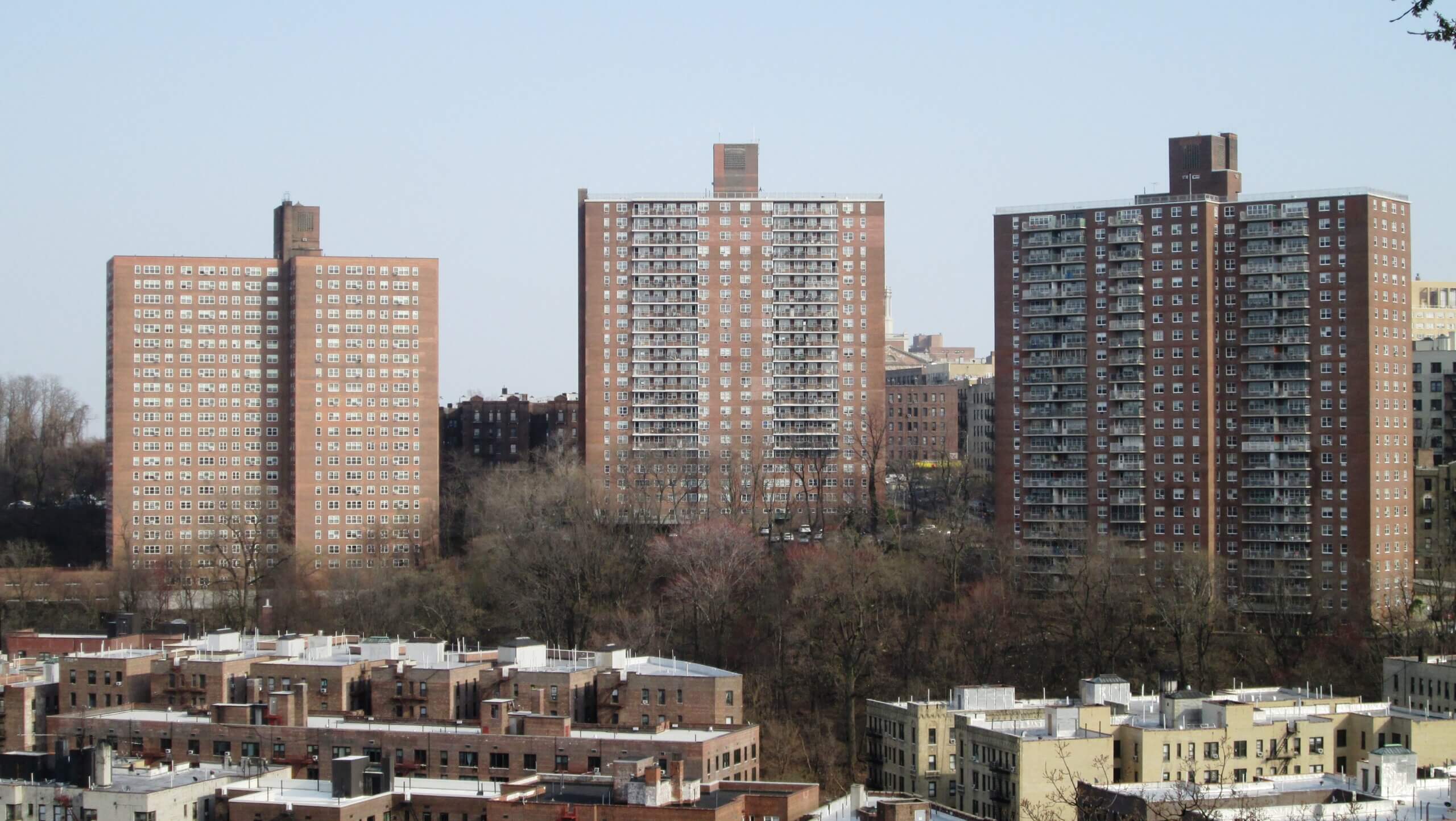
Last month, it handed down its ruling — agreeing with the Brooklyn Supreme Court and the Second Department that NYCHA’s responsibility could not be so easily waived, and that both cases would go to trial.
“We hold that though the sophisticated nature of an attack may in some cases be relevant to the proximate cause analysis, the fact that an attack was ‘targeted’ does not sever the causal chain between a landlord’s negligence and a plaintiff’s injuries as a matter of law,” wrote newly-appointed Chief Justice Rowan D. Wilson.
Joseph Rosato, the lawyer who represented Crushshon’s sons in their lawsuit against NYCHA, remarked that the Court of Appeals’ ruling now puts the case’s fate in a jury’s hands.
“It changed the direction of the law, and reaffirmed throughout the state now that these types of premises security cases, no matter how intent the bad person may be on committing this act, it’s really going to be for a jury to determine all of those factors when making a determination on whether it should proceed to trial or not,” said Rosato.
As NYCHA is the largest public housing landlord in the U.S. — and one of the largest landlords in New York City, overseeing more than 2,000 buildings and over 360,000 residents — the agency may be hit harder than most.
“NYCHA will respect the court’s ruling, and will continue to vigorously defend its interests. We have no further comment,” an agency spokesperson told amNewYork Metro.
NYCHA’s responsibility to provide locking doors and proper security
According to court documents, NYCHA admitted it had a responsibility to provide locking doors — but insisted that the fact that the victims were targeted automatically severed any liability they may have had in the murders, essentially rendering the question of proper locks moot.
In the Murphy case, the agency pointed to records that said a maintenance worker had checked the lock at Grant Houses the day of the murder and found it in good working order. Since the agency had not been informed that the lock was not working after that point, it said, it could not be held responsible for not having repaired it yet.
But Murphy’s mother, Tephanie Holston, testified that the door had been broken for years, since the family moved to Grant Houses in 2006.
Her lawyer, Stephen Pecoraro, also noted that the maintenance records were inconsistent, and perhaps unreliable.
Months before Murphy was killed, NYCHA records showed that an employee had repaired the side door — but it was later discovered that the employee named did not work at all for the entire month the repair supposedly happened, Pecoraro told amNewYork Metro.
At Cypress Hills Houses, where Crushshon moved with her four sons in 2006, the lock on the front door had been broken for months when Crushshon was killed in October 2007. Her son, Bryan Scurry, testified that pieces of the broken lock hung off the door.
Like in the Murphy case, NYCHA relied on testimony from a maintenance supervisor, who described the agency’s daily checks and prioritization of necessary repairs.
Rosato and his team rebutted — pointing out that NYCHA’s own records showed that the door had been broken for long stretches of time in the months before the attack, and there were no repair tickets to show that it had ever been fixed.
The killings, and questions of targeted victims
Ultimately, the biggest factor between the two cases was whether or not the victim could be considered “targeted.”
“The law has been that if the person is a targeted victim … a working lock wouldn’t have mattered,” Rosato said. “They were so intent on committing this act that even if the lock had been working, they would have found a way to get past it.”
Murphy was killed by two men — Tyshawn Brockington and Robert Cartagena — who lived at nearby Manhattanville Houses. According to court documents, de-facto gangs at Grant Houses and Manhattanville Houses had been sparring for weeks before Murphy was killed.
Murphy herself was not part of the Grant Houses group, but her brother was, as were some of her friends.
According to court documents, on Sept. 11, 2011, hours after an altercation at Manhattanville Houses, Brockington and Cartagena headed toward Grant Houses, where Murphy was hanging out with a group of friends.
The group spotted the men and ran into Murphy’s building through a self-locking side door. Security camera footage showed that though they pulled the door shut behind them, the auto-lock did not engage — the door bounced on its hinges, rather than latching shut.
Brockington and Cartagena entered through the same unlocked side door, found Murphy hiding in a stairwell, and shot her three times.
The teen’s friends, hidden on another floor, heard Murphy insisting she “wasn’t with” the gang members they were warring with — and one of the men responding “I don’t give a shit.”
Brockington and Cartegena were both eventually sentenced to prison for the murder.
Pecoraro argued the teen wasn’t truly the target — she was not a member of the Grant Houses gang, and her killers said they didn’t care when she told them she wasn’t involved in the ongoing fight.
“Here, she was one random person of the six kids,” Pecoraro said. “What if they just wanted to kill a random person at Grant Houses? It’s 2,000 tenants, right? If they’re targeted too, an injured person or the deceased has no recourse?”
Ultimately, the court ruled that Murphy was a targeted victim — Brockington and Cartagena had been searching for any of the six teens who fled into Grant Houses that night, including Murphy.
The judge granted NYCHA’s motion to toss the case out, and the appellate court later concurred.
Across the East River, though, Brooklyn Supreme Court decided the court itself did not have the ability to decide whether or not Crushshon was a targeted victim.
According to court documents, for months after Crushshon and her family moved to Cypress Hills Houses, she was harassed by an ex-partner, William Boney. Crushshon had ended the relationship because Boney was controlling, violent, and drank excessively.
Boney threatened Crushshon on the phone, called her workplace, harassed her new partner, and repeatedly showed up at her apartment.
On Oct. 24, 2007, Crushshon stepped out of her apartment to go to work and found Boney waiting for her in the hallway. The man cornered her, dumped flammable fluid all over her and himself, and set them both ablaze.
Crushshon’s son, Bryan Scurry, rushed out of the apartment to try to help — and ended up with severe burns over 80% of his body. He later sued NYCHA for negligence and wrongful death.
NYCHA argued that Boney’s attack was an “independent intervening cause” of Crushshon’s death, which would legally sever the connection between the broken lock and her murder.
The court wasn’t so sure. It was entirely possible, it ruled, that the broken lock was one of many causes of Crushshon’s death, and that NYCHA may not have fulfilled its duties in providing adequate protections to tenants.
Those questions — questions of the facts of the case — should be heard before a jury, Brooklyn Supreme Court decided.
The Second Department of the Appellate Division agreed, saying that in order for the case to be dismissed – as NYCHA wanted — the agency would have had to prove “that its alleged negligently maintained front door played no concurrent role in enabling Boney’s criminal conduct at the specific date, time, and place of his crime, however premeditated that criminal conduct might have been.”
The Court of Appeals
In what was Rowan’s first ruling as chief justice, he laid out the court’s reasoning for ruling to uphold the Brooklyn Supreme Court’s decision.
By law, landlords are required to provide “minimal precautions” to protect its tenants — including, specifically, front door locks.
The Manhattan Court decided that a locked door could not have stopped Brockington and Cartagena from killing Murphy — but, Rowan said, it can’t prove that. Even if they had been able to get past a properly secured door, the delay may have allowed Murphy to get to safety.
Rowan also stated that the records NYCHA relied on to prove it did not know the lock at Grant Houses was broken the day Murphy was killed were “inadequate.” The maintenance records were inconsistent and omitted other information, he said, and may have contained false information.
The questions about the facts of the case — what would have happened if the doors were locked, whether or not NYCHA’s records were accurate — is not for a judge to decide, Rowan said, but a jury.
“The general rule is questions of law are for the court, for the judges,” Pecoraro said. “Questions of fact are for the jury.”
It may be some time before either case actually gets to trial — there’s a significant backlog of cases because of the COVID-19 pandemic, Pecoraro said, so he doesn’t expect to appear before a judge before next year.
In the meantime, both Pecoraro and Rosato will have the opportunity to talk with NYCHA and attempt to settle out of court, though Pecoraro said the agency is “notoriously difficult” to resolve cases with, and he expects to go to trial.
“To say they’re happy about the decision, that’s a hard word,” Rosato said of Crushshon’s family. “It’s hard to find happiness in their situation. I can tell you, rather than happiness, there’s some satisfaction. Satisfaction that a jury will now decide, as it should, whether the Housing Authority took the necessary steps to properly and adequately protect their tenants.”
